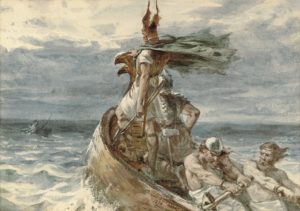 Our medieval and Viking ancestors were a prejudiced lot. They routinely attacked, enslaved, and killed people who weren’t like them. Furthermore, there was a lot of fear associated with those who were not like them. Does this sound familiar?
Our medieval and Viking ancestors were a prejudiced lot. They routinely attacked, enslaved, and killed people who weren’t like them. Furthermore, there was a lot of fear associated with those who were not like them. Does this sound familiar?
If you haven’t read my posts, you’re probably thinking that I’m talking about their prejudice and how it had to do with race. (Never mind that race is a construct.) But, you’d be wrong. I’m talking about their prejudices when it came to beliefs. Particularly, religious beliefs.
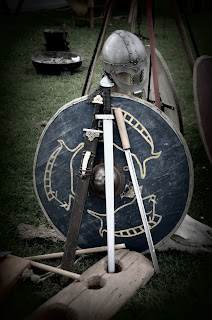 What’s a Color?
What’s a Color?
People in Medieval times didn’t think much in terms of skin color. Those who traveled through lands where the Mongols, Indians, and other peoples lived didn’t bother describing the color of the skin or the superficial characteristics that people nowadays seem to pay attention to. In fact, it was common for people to believe that the skin color was changeable and had to do with where you lived rather than what “race” you were from. It was genuinely thought that if you lived in the area long enough, you too would have the same types of features and skin pigments. Maybe it had to do with your skin tanning if you were out in the sun?
Those who traveled abroad and kept journals seldom, if ever, mentioned the color of the skin, unless it was pertinent to the story at hand, such as using something such as white markings on the skin to mark where the opponent was going to cut. Marco Polo mentioned skin color or other defining features only 10 times in his writings, and all had to do not with the color, but with defining a particular action or to clarify why something was done (like the white markings on dark skin) so it made sense to the reader.
Race was an Odd Concept Back Then
Race actually encompassed not color, but religion and even the station in one’s life. For example, nobles were considered another race entirely from serfs and even freemen, Christians were considered a different race from Pagans, and clans were considered different races from each other. In one of my posts, I talk about the “differences” between the Aesir, Vanir, and Jotunn. In our modern way of thinking, they come from the same “race” or same stock — the Jotunn actually intermarry with the gods and beget other gods. What makes the Aesir and Jotunn different races is their clans, kindreds, and beliefs.
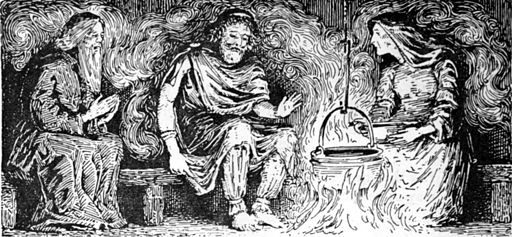 In the Rígsþula, a story where Heimdall sleeps with three women from three different houses and begets Þræll, Karl, and Jarl, we see that even though these are all children of Heimdall, they are considered very distinct and different. They aren’t just separate classes, but actual separate “races” that should never mingle, even though technically they could have children, should they do.
In the Rígsþula, a story where Heimdall sleeps with three women from three different houses and begets Þræll, Karl, and Jarl, we see that even though these are all children of Heimdall, they are considered very distinct and different. They aren’t just separate classes, but actual separate “races” that should never mingle, even though technically they could have children, should they do.
People Traveled (Surprise!)
People had feet (now, there’s a surprise) and they actually journeyed to other lands, even in the Viking Age. Sure, there were people who stayed stuck at home, (serfs and slaves, for example), but the Middle Ages was a happening time. People went on pilgrimages. Traders who sought a livelihood by bringing goods from the East certainly traveled. Many spices people used didn’t grow where they lived — someone had to travel to get the goods and bring them back. (As an aside, did you know spices were considered so valuable that people locked them up?)

We know that people from Africa, both Christian and Muslim, traveled in Europe. Coins from Africa turned up in Europe and yes, even England. I’ve seen a Viking cache with a Buddha statue in it. People encountered other races all the time. If you’ve read the tragedy of Othello, you know that he is a “Moor,” that is, black. You don’t get racial overtones from that play and even though Shakespeare lived in the 16th century, which was more the Renaissance than the Middle Ages, you can already see that having a black person as a tragic hero wasn’t a far stretch for people.
You’re Not of the Body!
 People didn’t really care about color. Instead, they cared about who you were allied with and what your religion was. Consider the Crusades. It wasn’t against people of Arabic descent. It was against the Muslims taking Jerusalem. Now, granted when Crusaders went on the Crusade, they would consider sacking just about any city that looked different, but that is more unfamiliarity and the desire to earn wealth. (Many Crusaders were willing to overlook the moral implications of sacking another Christian city, if it meant gold.)
People didn’t really care about color. Instead, they cared about who you were allied with and what your religion was. Consider the Crusades. It wasn’t against people of Arabic descent. It was against the Muslims taking Jerusalem. Now, granted when Crusaders went on the Crusade, they would consider sacking just about any city that looked different, but that is more unfamiliarity and the desire to earn wealth. (Many Crusaders were willing to overlook the moral implications of sacking another Christian city, if it meant gold.)
We know that slave trade existed, but Christians generally didn’t own Christians; they owned Pagans, Jews, and Muslims. Muslims generally didn’t own Muslims; they owned Christians, Jews, or people of other beliefs. The Vikings had a huge slavery economy (because someone had to tend the farms while they were off raiding) and the slaves were (surprise!) Christian and Muslim. I won’t say that there weren’t exceptions (there were), but those were the rules (more like guidelines, actually) and if you were of a particular belief, you generally didn’t own someone of that same belief.
People also cared about where you came from and who you were allied with. As countries started to solidify, you had people being more nationalistic, like the English considering themselves one country. There were still “others” in the country: Pagans, Jews, Muslims, heretics, and other beliefs. Those were different and were considered “less than” those who were Christian. (Note: it was not race, but religion that separated them. You could easily move from those “others” to Christian if you swore by the beliefs and weren’t labeled a heretic.)
Vikings made this concept very clear when it came to raiding. Other people hated them not because they were blond and fair-skinned (and not all were), but because they were pagan, raided the heck out of them, and held different allegiances. What ended the Viking era was that they found lands and became assimilated into the cultures they conquered.
What’s the Point?
The point is that yes, our ancestors were prejudiced, but they divided the world into those who held their beliefs and those who didn’t, those who were in their class and those who weren’t, and those who were in a particular kindred, clan, or followed a certain leader, and those who didn’t. Note that there really wasn’t a distinction when it came to color or “race.” Race to them was something that distinguished them from the “other.” But the “other” had to do with beliefs and not physical characteristics.
 This spring I had a lesson on why the good old days weren’t that great. Having dealt with the realities of raising livestock, I’ve become far more appreciative of modern medicine, and science, in general. Not that I wasn’t appreciative of science to begin with, but when you see it in action, it changes your worldview. And you start to realize just how tough our ancestors had it then. You also realize how unlikely it was to see 50 years old back then.
This spring I had a lesson on why the good old days weren’t that great. Having dealt with the realities of raising livestock, I’ve become far more appreciative of modern medicine, and science, in general. Not that I wasn’t appreciative of science to begin with, but when you see it in action, it changes your worldview. And you start to realize just how tough our ancestors had it then. You also realize how unlikely it was to see 50 years old back then.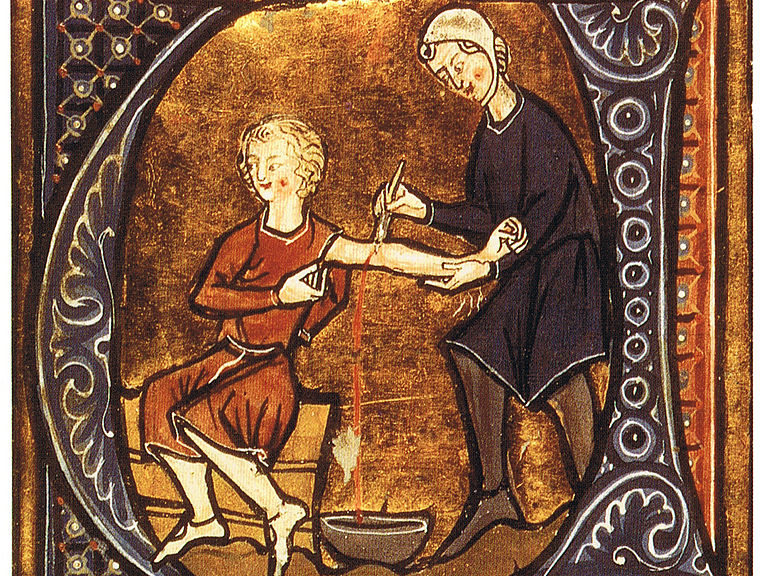
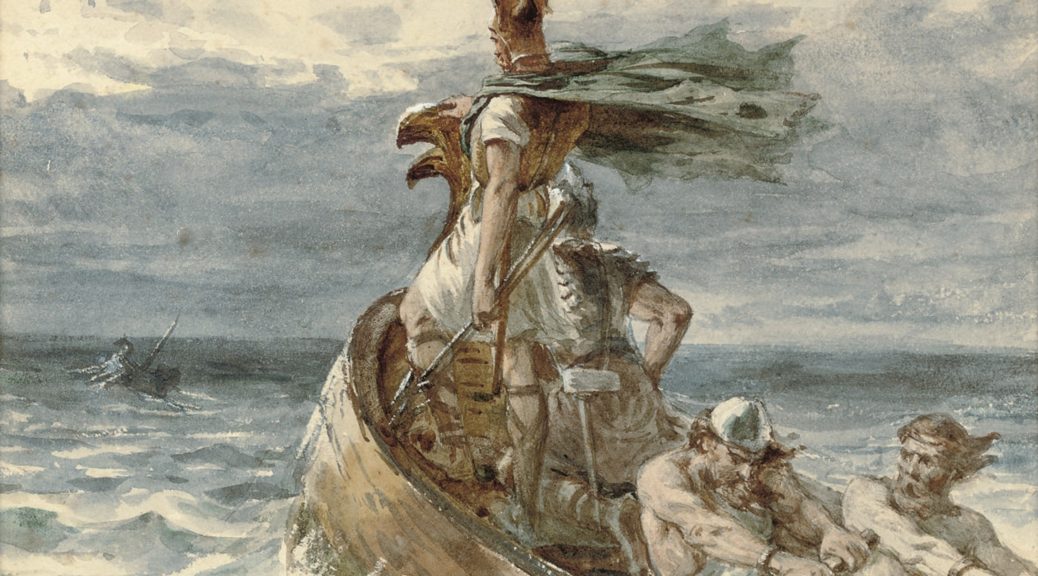
 Our medieval and Viking ancestors were a prejudiced lot. They routinely attacked, enslaved, and killed people who weren’t like them. Furthermore, there was a lot of fear associated with those who were not like them. Does this sound familiar?
Our medieval and Viking ancestors were a prejudiced lot. They routinely attacked, enslaved, and killed people who weren’t like them. Furthermore, there was a lot of fear associated with those who were not like them. Does this sound familiar?


